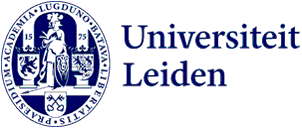
New generation galaxy formation simulations on the horizon – Evgenii Chaikin received his doctorate with honours
Simulations of galaxy formation provide much more information about galaxies than a telescope. Simulations have been improving significantly in recent years. Astronomer Evgenii Chaikin made such a significant contribution to this field that he graduated with honours on February 27th.

Evgenii Chaikin was completely surprised by the qualification “with honours” or cum laude at his graduation. His supervisor Joop Schaye, Professor of Galaxy Formation, emailed afterwards: ‘Evgenii's thesis is the step needed to enable the next generation of galaxy formation simulations. His insight, skill, and perseverance were crucial.’
Simulations reveal many details of galaxies
Chaikin explains the essence of his work: ‘There are many observations of galaxies. Gas and stars emit light at different wavelengths. Telescopes capture this light, allowing astronomers to determine the properties of those galaxies.’ However, these observations are rather limited. ‘You're looking from only one angle, and you see each galaxy at only one moment, while the evolution of a galaxy takes millions to billions of years.’ A significant advantage of simulations is that they can depict galaxies at any moment in their evolution and from all angles.
Although desired, simulations of galaxy formation are not guaranteed to be realistic. Researchers therefore compare simulation outcomes with real observations. Chaikin explains: ‘If a simulation model produces galaxies with many more stars than we observe in real galaxies, or if the stars are unrealistically distributed, then something is wrong with the model. You can extract important information from this, which ultimately leads to a better model and a better understanding of galaxy evolution.’
Simulations have become extremely sophisticated in the last ten years…
In the 1990s, astronomers began with the first simulations of galaxies. In the last ten years, they have become truly sophisticated thanks to the rapid development of both numerical models and computational facilities. ‘Now it can sometimes be almost impossible to distinguish a real galaxy from a simulated one,’ says Chaikin. There are various models with which researchers run simulations, which they then compare with each other and with observations. A modern simulation runs on a large supercomputer at full capacity for several months.
Chaikin worked on the COLIBRE model, alongside colleagues from Leiden University, Great Britain, and other European countries. ‘Thanks to the high spatial resolution achieved by COLIBRE simulations, you can zoom in on individual simulated galaxies to study the distribution of gas and stars in detail.’ At the same time, COLIBRE simulations have a fairly large volume: they contain a large number of galaxies with different properties and formation histories, which researchers can select, study, and compare with observations in multiple ways.

…But you have to calibrate all the ingredients very precisely
The art of a good simulation is to adjust the parameters, the 'ingredients,' of a simulation model so that it produces realistic galaxies. There are many ingredients, and sometimes a very small difference in the calibration of one ingredient can yield a completely different picture,’ says Chaikin. For example, gas mass, the distribution of gas, and the rate of star formation. ‘Stars explode at the end of their lives. The energy released in such an explosion heats the surrounding gas to very high temperatures and pushes the gas out of the galaxy. New stars then form more difficultly, as they require dense and cold gas.’
Cold gas and supernova explosions are now more realistically modelled
A major improvement achieved by the team was the realistic inclusion of cold gas between the stars. ‘Previously, it was almost never successful to realistically incorporate dense gas with temperatures below 1000 Kelvin into the models. While it is known that in the real Universe, a large part of it is present in molecular gas clouds, where stars form.’
Chaikin himself focused mainly on realistically incorporating the ingredient of supernova explosions. Such a spectacular explosion of one star occurs on a relatively small scale. ‘Due to the insufficient spatial resolution of the simulations, we cannot simulate this process in detail,’ explains Chaikin. ‘But a lot of energy is released in such an explosion, so it is crucial to include supernova explosions in the model of galaxy formation.’ One of the questions was: what is the best way to distribute this
energy in space during the simulation?

‘Just step by step’
Chaikin got to work on that. He wrote program code and calibrated the strength of the ‘energy feedback’ from supernova explosions and supermassive black holes in the COLIBRE model, ensuring that the properties of simulated galaxies are realistic. He showed quite a bit of perseverance, wrote his supervisor. Chaikin himself says about it: ‘It was a lot of work. But with a certain mindset, it worked. Just step by step. And it was really teamwork; I never had to struggle with something alone. If I couldn't figure something out, I shared it, and then we tackled the problem together.’
Some test simulations showed promising results from Chaikin's work, but the real test is yet to come. Fortunately, the Leiden Observatory isn't letting the talented young doctor go just yet. ‘I have been given a two-year postdoc appointment, during which I will continue to work on the COLIBRE model. The end of the development phase of this model is very close.’
Text: Rianne Lindhout
Image above article: The spatial distribution of gas temperature in a region of a test simulation with the COLIBRE galaxy formation model.
